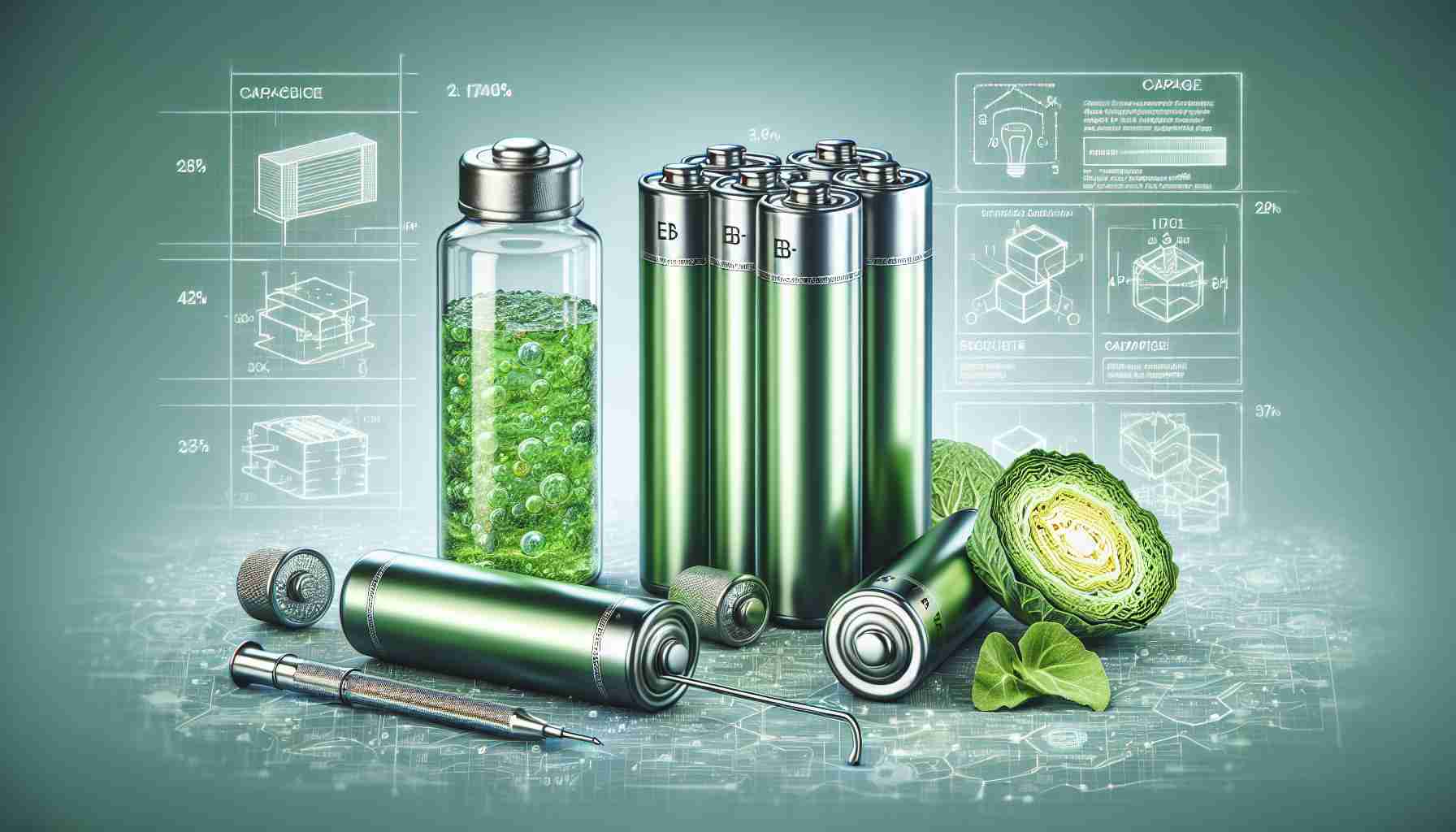Researchers have discovered a surprising solution to a common problem in zinc batteries: cabbage. A substance found in cabbage, called xanthan gum, has been found to prevent the formation of harmful crystal formations on the surface of zinc batteries, thus prolonging their lifespan.
The protective properties of xanthan gum, already known in the cosmetics industry, have now been applied to zinc batteries by scientists from Pohang University of Science and Technology in South Korea. By mixing the cabbage-derived gum with an ionically conductive polymer, the researchers created a shield layer that prevents the growth of twig-like structures inside the power cells.
Zinc batteries have long been seen as a more sustainable alternative to traditional lithium-ion batteries. While lithium-ion batteries require expensive and hard-to-source metals, zinc is abundant and readily available. However, the development of zinc battery technology has been hindered by unwanted chemical reactions.
With the addition of the cabbage-based shielding, the zinc battery successfully withstood 200 days of repeated charging and discharging during testing. This breakthrough paves the way for zinc-ion batteries to become a viable option for energy storage, particularly in intermittent renewable power systems.
Energy storage is a crucial component in harnessing renewable energy efficiently. While lithium-ion batteries have been commonly used for energy storage, their high cost and concerns about lithium depletion have motivated ongoing research into alternative solutions.
The unlikely combination of common cabbage and abundant zinc could revolutionize battery technology and advance the adoption of sustainable green energy production. By addressing the limitations of zinc batteries, this breakthrough brings us closer to a more sustainable future.
Lead researcher Professor Changshin Jo expressed hope that this research will contribute to the advancement of energy storage technology for sustainable green energy production. As we continue our journey towards a more sustainable future, innovations like this will play a crucial role in reducing our reliance on fossil fuels and mitigating climate change.
FAQ Section:
Q: What did researchers discover about zinc batteries?
A: Researchers discovered that a substance found in cabbage called xanthan gum can prevent harmful crystal formations on the surface of zinc batteries, prolonging their lifespan.
Q: How did scientists apply the properties of xanthan gum to zinc batteries?
A: Scientists mixed the cabbage-derived xanthan gum with an ionically conductive polymer, creating a shield layer that prevents the growth of undesirable structures inside zinc batteries.
Q: How have zinc batteries been hindered in their development?
A: Chemical reactions have been a hindrance in the development of zinc battery technology.
Q: How long did the zinc battery with the cabbage-based shielding last during testing?
A: The zinc battery with the cabbage-based shielding successfully withstood 200 days of repeated charging and discharging during testing.
Q: What could this breakthrough mean for energy storage?
A: This breakthrough opens the possibility for zinc-ion batteries to become a viable option for energy storage, particularly in intermittent renewable power systems.
Q: What challenges do traditional lithium-ion batteries face?
A: Traditional lithium-ion batteries are expensive and rely on hard-to-source metals, with concerns about lithium depletion.
Q: How does this discovery revolutionize battery technology?
A: The unlikely combination of cabbage and zinc has the potential to revolutionize battery technology, advancing the adoption of sustainable green energy production.
Q: What is the goal of this research?
A: The lead researcher hopes that this research will contribute to the advancement of energy storage technology for sustainable green energy production.
Key Terms/Jargon:
– Xanthan gum: A substance found in cabbage that has protective properties.
– Zinc batteries: Batteries that use zinc as the main material for energy storage.
– Ionically conductive polymer: A polymer that conducts ions, allowing for the flow of electric current.
– Crystal formations: Structures that can form on the surface of batteries and hinder their performance.
Suggested Related Links:
– Poseidon Energy
– Renewable Energy World
– International Renewable Energy Agency (IRENA)
The source of the article is from the blog procarsrl.com.ar
